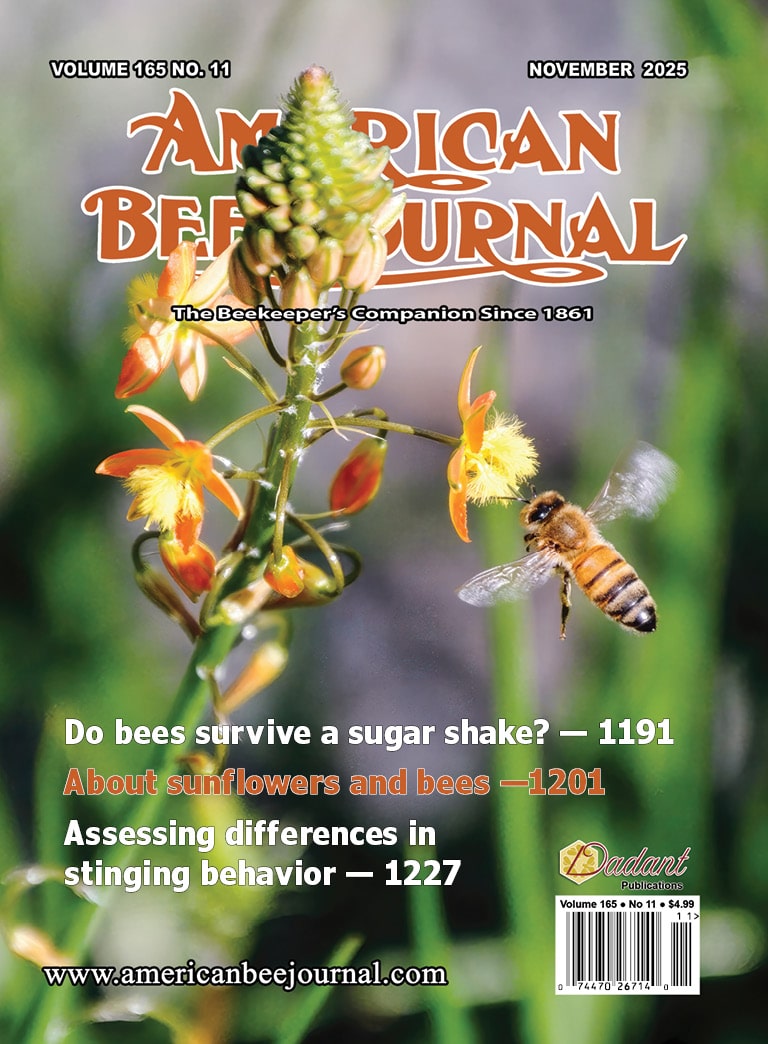On June 30, 2025, roughly a couple of weeks after the main spring nectar flow had subsided, I was inspecting colonies. Some of the colonies remained queenless following swarm season because their daughter queens, the ones inheriting the colonies, failed to mate. While swarm season had mostly ended in late May to perhaps early June, late prime swarming, extended by afterswarming, would consequently have daughter queens mating into late June. By now even these late-swarming colonies should have had daughter queens starting their broodnests, if they survived their mating flights.
Going into the summer dearth, I need to make sure all colonies are queenright (see Figure 1). Otherwise if unknown terminally queenless (also called hopelessly queenless) colonies remain, they will become weak, lacking enough bees to protect their combs. In locations where small hive beetles are a seasonal problem, they will invade these colonies. Later in the summer, these colonies are found dead with slimy combs. Those colony deaths will not be a varroa problem, not a pesticide problem or any other in the long list of deleterious problems we have. It is a simply a management problem (cryptic terminal queenlessness). Earlier in the season, if those terminal colonies were detected and requeened, their population trajectories could have been aimed back to being strong through the summer.
The thinking that I apply to myself is that at least a small number of the terminally queenless colonies are in my operation at the end of the swarm season. I need to find them. (Some seasons when queen-mating success is poor, the number of terminal colonies is frightfully large.) I would rather do the hard work of finding these terminal colonies, working hives with plenty of bees, rather than enduring the debilitating work of dealing with prematurely dead colonies, cleaning up slimy frames, and hives devoid of bees.
Overall, this last round of queen mating success had been remarkably good. I found larvae in almost all colonies that swarmed until nearly the end of the work day, until I came to a hive second from the end of the row, where I had almost finished checking the apiary …


